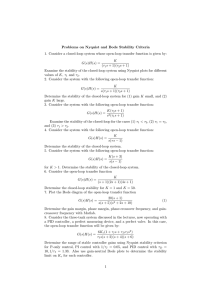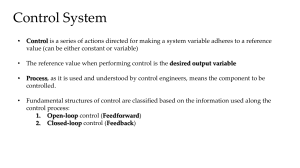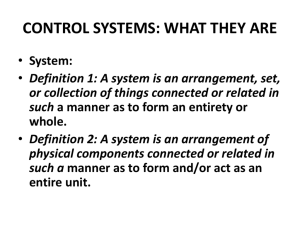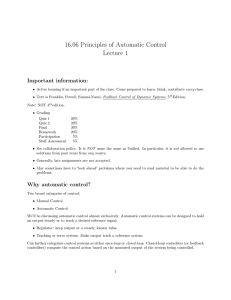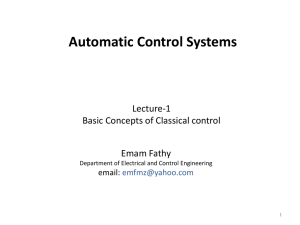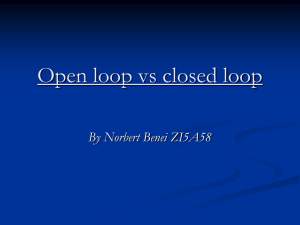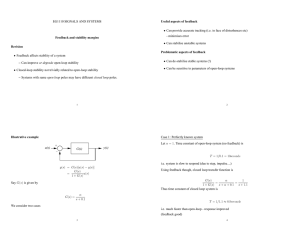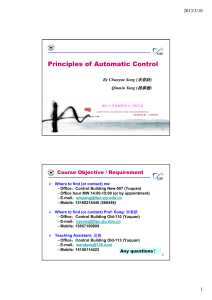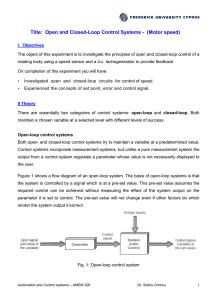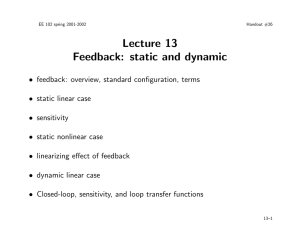Master Thesis Presentation ‘Capacity of Hybrid Open-loop and Closed-loop MIMO with Channel
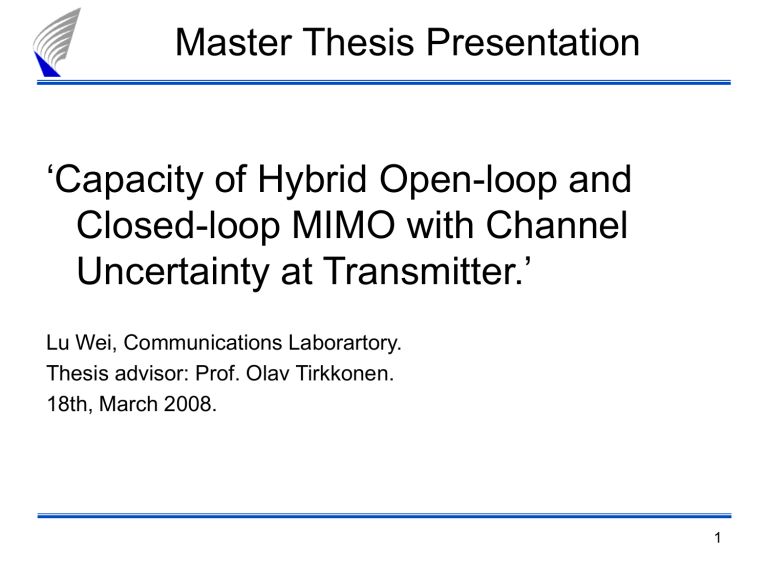
Master Thesis Presentation
‘Capacity of Hybrid Open-loop and
Closed-loop MIMO with Channel
Uncertainty at Transmitter.’
Lu Wei, Communications Laborartory.
Thesis advisor: Prof. Olav Tirkkonen.
18th, March 2008.
1
Outline
Transmit diversity techniques.
Our research problem.
Formulations and Simplifications.
Numerical results.
Conclusion.
2
Transmit diversity techniques: Open-loop case
Open-loop case: space-time block code.
2 transmit and 1 receieve antennas: Alamouti code:
Optimal linear open-loop transmit diversity scheme: It provides full diversity, with linear matched filter detection and it reaches channel capacity.
3
Closed-loop case
Requring channel state information at transmitter
Optimal w is:
Being able to have complete channel state information gives us a 3dB gain in SNR over the Alamounti code
4
Hybrid Open-loop and Closed-loop Methods
Significant performance gap between openloop and closed-loop schemes.
Assuming the transmitter has partial but not perfect knowledge about the channel.
Question: how to improve a predetermined code so that the channel imperfection is taken into account ?
reqiures: 1. modeling the channel imperfection.
2. adopted an appropriate signal model.
5
Channel Imperfection
One model exists in the literature is:
Degree of correlation, normalized correlation coefficient:
pdf of the true channel, conditioned on the imperfect CSI, is complex Gaussian distributed: conditional mean: conditional covariance:
6
The Signal Model
Consider a predetermined Alamouti code, diagonal beam weighting matrix: the unitary beamforming matrix:
When P
1
1, P
2
0
P
1
P
2
1 2
7
Our Research Problem
What is the value of P matrix that will maximize the mutual information between Tx and Rx, when certain channel feedback is available?
This same problem has been solved by George
Jongren, et al. under the criterion of minimizing block error rate.
Our work considers the information theoretic performance criterion of maximizing the mutual information and which permits an analytical solution.
8
Formulations and Simplifications
The capacity can be expressed as:
Average out the true but unknown channel to obtain:
Our objective is:
9
Formulations and Simplifications
Under the i.i.d fading assumption:
With the change of variable: the capacity expression is now,
Making a change of variable again to obtain: and the capacity over the corresponding distribution is:
10
Formulations and Simplifications
Remind that our problem is to maximize the capacity with respect to P:
We could rely on numerical methods to find the optimal P value.
An efficient approximation method can be utilized for the capacity integration as well.
11
Capacity Approximation
Two steps approaches for the appro.
First, weighted sum of non-central chi-square variables approximated by a single central one:
Mean fits:
Variance fits:
12
Capacity Approximation
Second, using a Lemma by Porteous:
Lemma,
Combining the chi-square approximation in equation with the Porteous Lemma, the capacity can be calculated as:
13
Numerical Results
14
Numerical Results
15
Numerical Results
16
Numerical Results
17
Conclusion
The proposed beamformer could benefit the from open-loop and closed-loop methods according to the channel feedback quality.
We have achieved the optimal combing of open-loop and closed-loop in mutual information optimal sense.
The analytical framework could possibly be extented to more than 2 Tx case.
18
Thank you!
19
